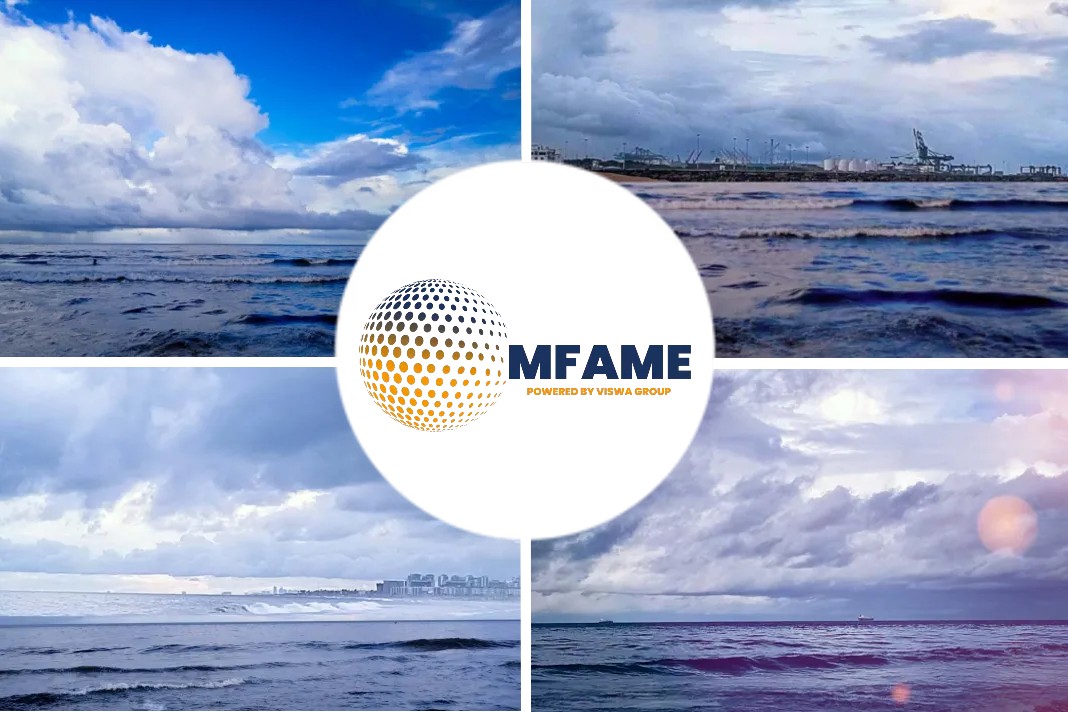The privately owned Chinese gas distributor ENN Energy has placed an order for an 8,500-m3 LNG bunker vessel at Dalian Shipbuilding Industry Company (DSIC) to be delivered in 2020. The tanker will be used not only to fuel LNG-powered ships but also to provide LNG carrier precooling and gas-testing services.
Multifunctional LNG installation
In tandem with news of the LNGBV newbuilding contract, ENN stated its Zhoushan terminal had formally commenced commercial operations. The facility, which has the capacity to import up to 3 mta of LNG, received an initial commissioning cargo on board 145,500-m3 Stena Blue Sky in August 2018 and has been testing its cryogenic and regasification systems over the past two months.
The ENN Zhoushan terminal has been constructed as a multifunctional LNG installation, able to handle LNG imports, bunkerin, and distribution. Two 160,000-m3 storage tanks, a regasification system, a pipeline connection to the provincial grid and a primary jetty able to accommodate LNG carriers of up to 265,000 m3enable large import volumes.
A second berth to counter additional load
Backing up these facilities are a second berth equipped to load smaller LNG tankers of 5,000 to 60,000 m3, such as the new LNGBV, two berths for ro-ro vessels and two banks of 20 LNG road tanker loading bays. Road tanker and ISO tank container loads of LNG from Zhoushan will be delivered to customers on the mainland by ro-ro vessels.
ENN has signed LNG sale and purchase agreements (SPAs) with Chevron, Total and Origin Energy, each covering the supply of 0.5 mta to Zhoushan. The Chevron and Total SPAs are 10-year contracts while the Origin contract is for five years.
ENN has plans to expand the capacity of the terminal to 5 mta and possibly 10 mta in the future should demand to warrant it.
Building new cargo tanks
The new 119-m LNGBV that DSIC is building for ENN will have two IMO Type C cargo tanks and a dual-fuel propulsion system. Earlier this decade ENN identified the LNG bunkering of gas-powered seagoing and inland waterway vessels as a strong potential growth sector, and the LNGBV newbuilding will augment the company’s initial forays into LNG fuelling.
LNG bunkering in China
In early 2015, ENN was involved in the inaugural LNG bunkering of Kvitbjørn, a 5,000-dwt multipurpose, gas-fuelled cargo ship built in China for Nor Lines. The operation took place prior to the ship’s departure for Europe on its delivery voyage and was the first fuelling of a seagoing vessel in China.
Kvitbjørn subsequently bunkered across the jetties at the Kochi LNG import terminal in India and the Cartagena facility in Spain. In doing so, when the cargo ship docked at Bergen in Norway in March 2015, it had completed the longest voyage ever undertaken by a vessel running solely on LNG.
ENN has also bunkered a dual-fuel tug built for CNOOC and operation in Ningbo harbor, and in April 2015 the company’s Xinjiang ENN 01, the first standardized inland waterway LNG bunkering barge in China, completed its initial test gas-fuelling operation. The latter vessel is stationed on the Xijiang River.
Another gas-powered tug ENN fuelled was Buksér of Berging-owned Bokn. The truck-to-ship operation was carried out in March 2014 at the Italian port of Civitavecchia by LNGEurope, ENN’s Dutch-based subsidiary, on the tug’s delivery voyage from Turkey to Norway.
China’s strategy for LNG fuelled vessel
The timing of ENN’s LNGBV newbuilding order and the Zhoushan terminal commissioning is propitious. China’s Ministry of Transport is currently drafting a national strategy for LNG as marine fuel, with the intention of having a full-scale LNG bunkering infrastructure in place by 2025. The programme calls for 15% of government-owned vessels and 10% of shipping on the country’s busiest inland waterways to be LNG-fuelled by that date.
The government has also implemented stricter emission controls for shipping serving the Shanghai ports range, the Yangtze River Delta and Zhejiang province, from 1 October 2018. Ships on international voyages visiting these zones will be restricted to using fuel with a maximum sulphur content of 0.5%.
Did you subscribe for our daily newsletter?
It’s Free! Click here to Subscribe!
Source: LNG World Shipping

















